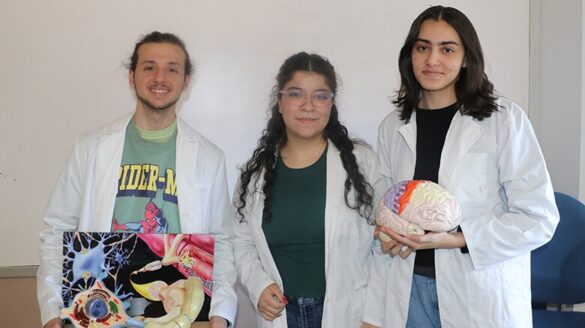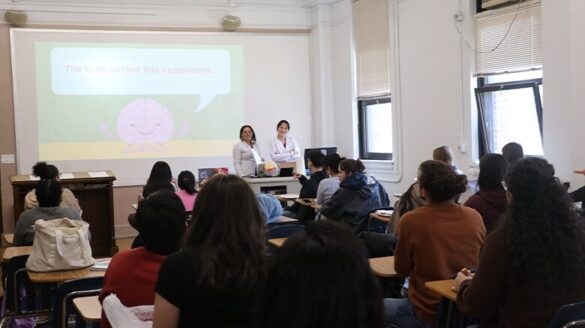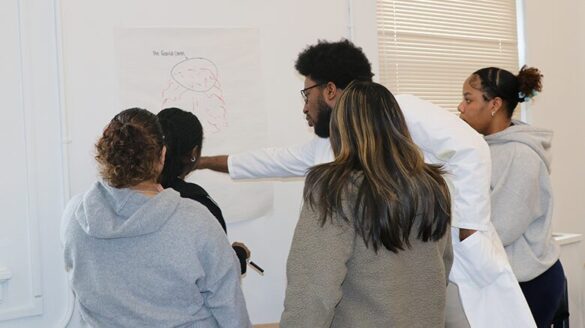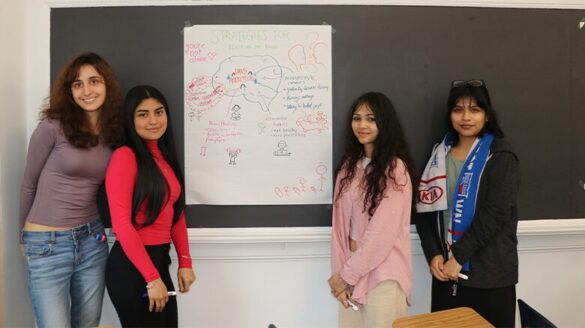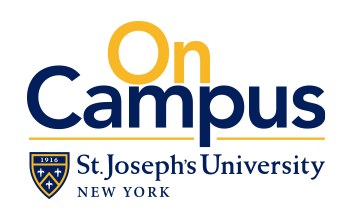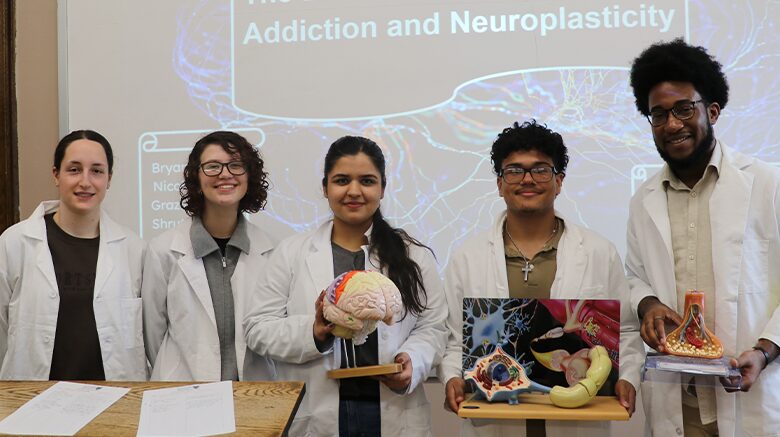St. Joseph’s University, New York hosted its first Brain Awareness Week on the Brooklyn Campus with three interactive student-led presentations that touched on various aspects of neuroscience.
The common hour presentations, held on March 26 and 27 and April 2, were inspired by Brain Awareness programming initiated by the Dana Foundation, a New York-based philanthropic organization that advances neuroscience.
While the official Brain Awareness Week is held earlier in March, SJNY shifted its timeline due to spring break and exams. But the goal was the same: share neuroscience-related concepts and research with a broader audience in an engaging and accessible way.
According to Bor-Shuen Wang, Ph.D., assistant professor of biology, SJNY students accomplished that task with aplomb.
Students were asked to choose a neuroscience-related topic that interested them, design an interactive activity and create a short presentation.
On March 26, Kleopatra Garo ’26 and Milana Haripersaud ’26 presented a session on taste perception and the placebo effect. Garo and Haripersaud explained some of the science of taste, sharing information on taste buds, neurotransmitters and genetics.
Participants were asked to eat a particular color jelly bean and discuss the taste within their small group. While the candies looked similar on the outside, they were not on the inside. Using the well-known Jelly Belly brand of candy, attendees had either a yellow jelly bean that tasted like banana or “wet dog”—a flavor from Jelly Belly’s BeanBoozled collection. Other colors offered the same A vs. B experience. The resulting discussion delved into how others can influence perception and the placebo effect.
Massimo Bianco ’26, Anastajia Melika ’26 and Kaela Collazo ’25 teamed up to explore multisensory awareness in a session on the relationship between smell and neuroscience. The trio focused on the roles of smell and taste and their integration in the brain.
“Along with our studies from Dr. Wang’s physiology and neuroscience courses, we wanted to study and present the connection between our senses of taste and smell, showing how they both impact how we perceive flavor,” said Bianco.
“We were all super interested in exploring this realm of neuroscience because the perception of flavor plays into our daily lives,” shared Collazo.
“Presenting for this project and gathering the data and experiences of the participants was very fascinating. It brought science to life—something which is gravely important in the learning process,” added Melika.
The final event, held on April 2, featured a presentation with Shruti Luintel ’28, Bryan Garcia ’28, Grazia Mazza ’28, Corey Gordon ’27 and Nicole Grech ’28—students in SJNY’s honors program.
Their presentation centered on neuroplasticity—the brain’s ability to change and adapt—and addiction. The students represented a range of majors, including biology, child study, psychology and nursing. In the presentation, they discussed dopamine, the weakening of the prefrontal cortex and more. Their session concluded with an activity in which attendees created posters.
Benefits Beyond The Classroom
According to Dr. Wang, student-led initiatives, such as those held during Brain Awareness Week, are a critical part of higher-level education.
“What impressed me the most was that both groups independently came up with the idea of incorporating a live experiment as their interactive component. They designed the experiment, collected data during the event, analyzed the results in real-time, and shared their findings with the audience—all on their own. This is no small feat, and it truly exceeded my expectations. It was incredible to see the scientist mindset come alive in them,” said Dr. Wang.
“As a STEM major with a great interest in neuroscience, this event was exciting in that I was able to share scientific knowledge and engage with students in conversations about brain physiology and function,” noted Garo, a biology major who presented on the first day. “It felt great to see students quite curious and enthusiastic about the topics presented. I hope events as such continue in the university, as they create a collaborative and meaningful space for learning beyond the traditional classroom lecture.”
In addition, Brain Awareness Week activities helped students with public speaking and leadership skills.
“It’s one thing to learn about neuroscience in a classroom setting, but to synthesize information, present it to an audience, and facilitate interactive discussions is an entirely different challenge,” said Dr. Wang. “Watching them step out of their comfort zones and grow through the experience was truly rewarding.”
